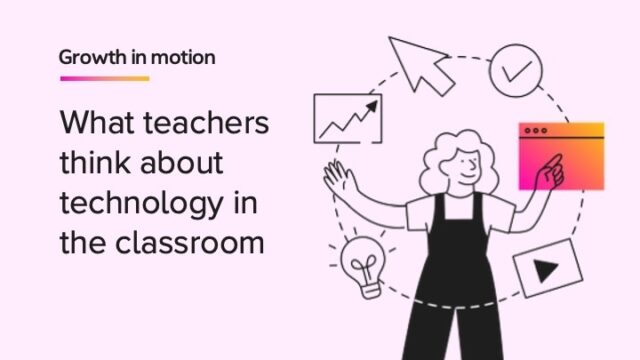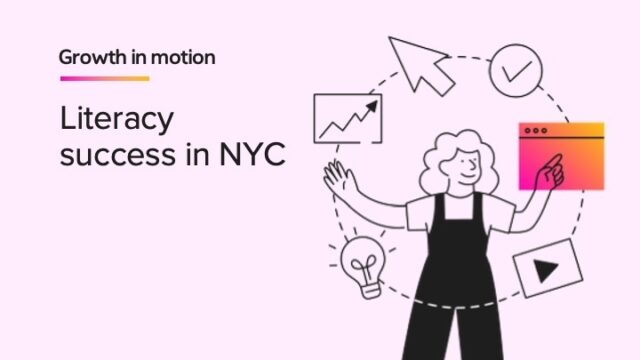
Today’s students are growing up in a digital world. Using technology in the classroom can increase their engagement, foster collaboration, support diverse learning needs, and build critical skills. But to be truly effective, it must be thoughtfully integrated in ways that align with clear educational objectives. Let’s take a closer look at why integrating technology into the classroom is so important.
Access to more resources
Technology has opened a world of possibilities, offering both educators and students an array of resources from online libraries and educational apps to global information and community. Students can access digital textbooks, videos, and interactive tools anytime and anywhere, making learning more flexible and inclusive. By removing time and location barriers, students are able to revisit content, explore subjects more deeply, or catch up if they’ve fallen behind.
Through digital platforms, teachers and students can connect with peers, experts, and educators worldwide, gaining exposure to new ideas and cultures. This exposure not only deepens their understanding of the world but also builds empathy and a sense of global citizenship. Teachers can also tap into online professional development resources, lesson plans, and collaborative networks to grow as an educator.
Enhancing communication and collaboration
Collaborative programs and cloud-based tools—such as shared documents, discussion boards, and video conferencing—increase communication, making it easier for teachers, students, and caregivers to stay connected. Students can easily work together on group projects, exchange ideas, and give feedback, building a more collaborative learning environment.
Teachers can use communication strategies to keep caregivers and parents updated about what’s happening in the classroom. For example, a web-based calendar can track important dates such as assignments, field trips, and birthdays. A class website can take this a step further, creating a space for announcements, classroom procedures, and additional resources such as study guides or enrichment opportunities.
By connecting students, teachers, and caregivers in real time, communication becomes more efficient, inclusive, and interactive.
Engaging students through active learning
Active learning is a learning mode that focuses on students doing activities that require higher-order thinking. Unlike passive learning—where students absorb information, commonly in the form of lectures or reading—active learning requires students to apply concepts, think critically, and collaborate with peers. Activities such as participating in discussions, analyzing stories, creating concept maps, and working on group projects are all great examples of active learning.
Technology supports active learning and student engagement by giving students interactive tools that encourage participation, collaboration, and critical thinking. Virtual labs and educational games give students the opportunity to experiment, solve problems, and explore concepts, while collaborative tools facilitate real-time teamwork and feedback.
Providing personalized learning for every student
Personalized learning is a student-centered approach that tailors educational experiences to meet the unique needs, strengths, and interests of each student. But it can be time consuming for teachers to determine the unique learning needs of every student. Computer-based formative assessments can assist teachers in assessing students’ skill levels as well as group students together for small-group instruction and provide additional resources.
Adaptive learning is one method that uses technology to supports personalized learning. Adaptive learning solutions, such as Waggle, assess students and customize content to each student’s individual pace and proficiency level. Waggle, along with similiar programs, will adjust difficulty levels and offer a variety of learning activities, allowing students to move at their own pace.
When technology and personalized learning work together, educators can spend more time on students, relying on technology to complete tasks like grading assessments, providing feedback, and monitoring student performance. Teachers can also use this technology to differentiate instruction.
Improving efficiencies for teachers and administrators
With all the amazing opportunities technology offers, some educators may be worried that there won’t always be a need for teachers. Jack Lynch, HMH’s CEO, addresses this concern: “Technology never aims to replace a teacher’s expertise—nothing ever should—but gives them back time to deepen relationships with students.”
Data analytics tools help teachers and administrators track student performance trends, identify students who need additional support, and make informed data-driven decisions about curriculum adjustments. Technology that helps sort through and analyze data can make using data in education more efficient and insightful. Using AI in the classroom can save educators hours by quickly assessing homework and assignments, creating lesson plans, and providing personalized feedback, giving them back time to focus on their students and provide more personalized instruction.
Online professional development courses and resources offer teachers flexible opportunities to grow their skills and stay current with best practices. Solutions like Coachly use evidence-based coaching frameworks and offer unlimited virtual coaching to help teachers reach their goals.
Preparing students for the future
Technology can prepare students for the future by equipping them with essential 21st-century skills and experiences needed in a digitally driven world. From being able to critically evaluate information and solve complex problems to managing social interactions and mastering digital tools, these skills ensure that students can navigate both personal and professional challenges. With the vast amount of information available, it is especially important for students to know how to think critically and determine if the information comes from a trusted source.
Exposure to different technology can also spark interest and inspire students to pursue various career paths in fields like software engineering and web development. Interactive learning experiences, like virtual simulations and project-based learning, help students envision themselves in these careers.
Meaningful learning experiences
Bringing technology into your classroom can open the door to engaging learning experiences. With the right tools, lessons can become more personalized, interactive, and inclusive, allowing each student to connect with the material in a way that works best for them. By incorporating even one new digital tool, you can spark curiosity and create a more meaningful learning experience for your students.
This article was adapted from a blog post initially developed by the education technology company Classcraft, which was acquired by HMH in 2023. The views expressed in this article are those of the author and do not necessarily represent those of HMH.
***
Find more lesson plans and classroom resources on Shaped.
Be the first to read the latest from Shaped.














